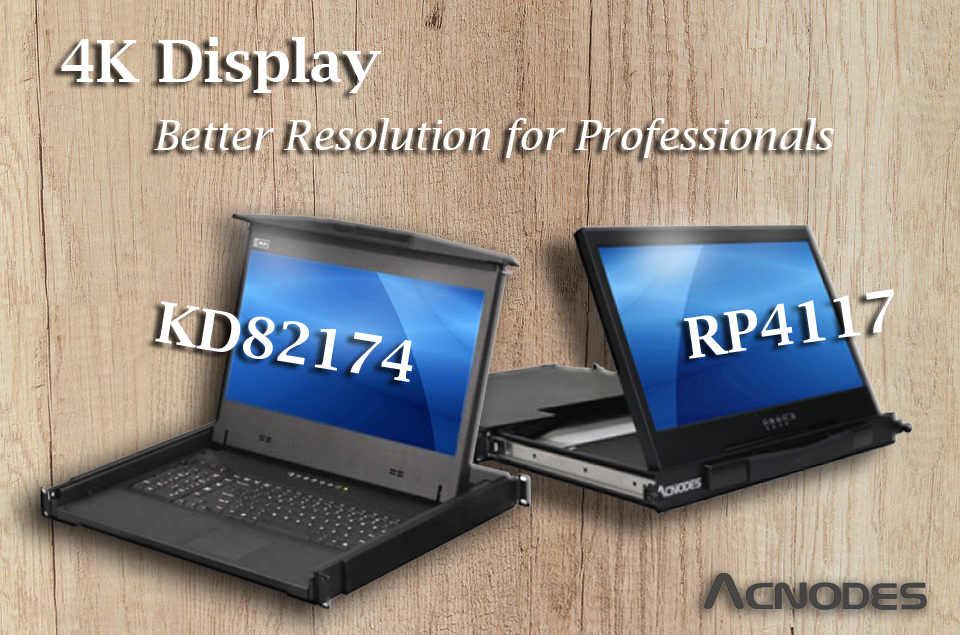Everything You Need to Know About 4K Display
4K display or Ultra HD offers enough pixels to fill four Full HD 1080p screens. With the 4K screens are definitely better for editing photos, playing games, and watching videos. Furthermore, with four times the amount of pixels, the display is able to show four times the level of detail. However, everything from the cable to applications you use can cause an impact on your experiences of 4K displays.
4K Resolution
First of all, what is a 4K display? 4K simply means a clearer picture, it offers more pixels on the screen. Nowadays, the industry named 1080p resolution after image height and named 4K after image width. The pixels of 4K display creates images that are crisper and capable of showing more details than standard HD displays. With HD 1080p screens, the images offer only a 1920 x 1080 resolution while 4K screens provide about 8 million pixels. On the other hand, it means users can fit every pixel from 1080p set onto one-quarter of a 4K screen. Therefore, 4K resolution provides double times what the current 1080p set can display.
Furthermore, 4K displays come with a native resolution of 3840 x 2160. To compare 4K with 1080p, with all other things being equal, 4K displays provide capable of producing much sharper and detailed images. Moreover, when editing photos in a 4K display, it will not cause the photos scaling. On the other hand, the 4K displays offer unscaled images and benefit many creative professionals in workplaces. For instance, Acnodes’ industrials 4K rackmount monitor, RMW7176, is suitable for industry professionals.
However, having all the pixels from the 4K display may cause issues in some scenarios. For example, everyday computing tasks such as web browsing or paperwork typing all work great with 4K displays. But, with gamers, it is a different story. Gamers need a powerful graphics cards to achieve playable frame rates at 4K resolutions.
LCD Panel Type
With the current crop of 4K monitors employ a range of different panel types. Such as TN (Twisted Nematic), IPS (In-Plane Switching), and IGZO (Indium Gallium Zinc Oxide) panel types. Next, the prices ranged from TN panels for the lowest prices and then IPS panels and IGZO.
Typically, TN panels target mainstream users and gamers. Moreover, TN panels provide the fastest response times and great in color accuracy and viewing angles. However, TN panels cannot satisfy the pro users. On the other hand, IPS panels offer very good color reproduction and viewing angles. However, IPS panels usually offer response times that are slower than TN panels. Furthermore, IGZO panels offer better power and less mass which is ideal for use in high-density displays like a 4K monitor.
Moreover, refresh rates with 4K panels are also an important point to be concerned about. Currently, on the market, an affordable 4K display monitor offers 30Hz refresh rates. On the other hand, the typical refresh rate of a mainstream display is 60Hz. Furthermore, some gaming monitors offer as high as 144Hz. Although 30Hz is fast enough for editing videos and images. However, the user experience with a 30Hz display is not that great compared to 60Hz. Therefore, when using a 4K display with refresh rate 60Hz or higher display will gain more satisfying user experiences.
Connector Type
Nowadays most PCs drive 4K monitors successfully without any problems. For everyday tasks, such as editing photos or browsing web. On the other hand, driving 4 times the pixels in games, users will need a powerful graphics card to have better image qualities. Therefore, gamers will need to find some graphics cards that can corporate with 4K monitors.
The main hardware requirement for running a 4K display is that has a suitable output that will be compatible with a 4K monitor. Furthermore, HDMI can be used to drive 4K displays, but many of them (HDMI version 1.4) supports only at 30Hz on 4K monitor. With 30Hz the user experiences are not very pleasant. However, HDMI 2.0 supports 4K at 60Hz which provides the minimum refresh rate to run a 4K monitor. Moreover, DVI handles 2560 x 1440 at 60Hz easily, but not 3480 x 2160 (4K resolution). Therefore, users cannot drive 4K displays at 60Hz using DVI.
Operating Systems: Windows
Another major consideration with 4K displays is the version of Windows users’ computers are running. Furthermore, versions of Windows make differences as well. For instance, Windows 7 supports 4K displays, but not as great at handling scaling compared to Windows 8.1 and Windows 10.
Moreover, the smaller of the 4K screen, the higher scaling it will likely want to use. Windows is good at increasing the size of fonts and graphics. Therefore, users can adjust the scaling value easily to which is comfortable for the user's experiences.
Acnodes Corporation has a wide array of product line configurations. They can customize most commercial and industrial computers to one’s specific needs. For information, please visit www.acnodes.com or contact us at [email protected].
About Acnodes Corporation
Acnodes manufactures, designs, and markets industrial computers and display solutions for diverse industries ranging from automation to military. We have an array of technological innovations in the area of rack mount servers, embedded computers, Panel PC’s and rugged monitors that create simpler and more valuable products to the customers. We work closely with our clients to customize computer products to meet their required projects and challenges. Acnodes strives to explore new technologies to better improve life and work.





